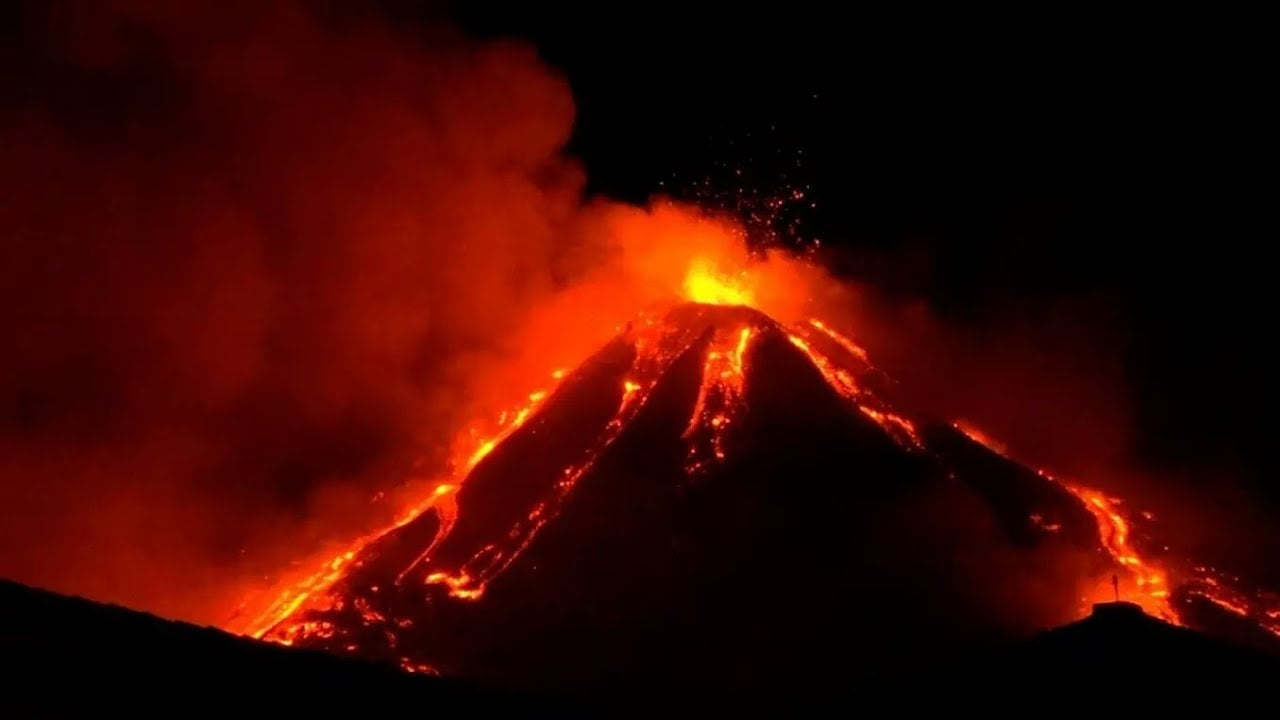
Mount Etna, Europe's most active volcano, has been erupting regularly since 2011. However, the latest series of explosions, which began on February 16, 2021, has been particularly noteworthy. Emanating from the youngest of the volcano's four craters — the Southeast Crater— they have spewed spectacular fountains of lava as high as 0.9 miles (1.5 kilometers). To put it in perspective, that is about three times the height of One World Trade Center, the tallest building in the United States.
“The most recent novelty is that the last six eruptive paroxysms were among the most violent in the Southeast Crater's young history,” says Marco Neri, a volcanologist with Italy's National Institute of Geophysics and Volcanology (INGV).

Fortunately, the recent eruptions are posing no threat to the residents of the eight villages situated along Etna's slopes. While they have had to deal with the inconvenience of cleaning out the ash and rubble, the lava has only been flowing down the Southeast Crater's uninhabited side. In fact, the only time the active volcano has proved lethal in recent history was in 1669, when its ash, lava, and rocks decimated a dozen towns and killed thousands. In 1983, engineers were able to avert a disaster by diverting the lava flow away from homes using dynamite. And, in 1992, the Italian army protected residents by building an earthen wall around a village.
Though the threat posed by the volcano may send many people scurrying away, the Sicilians love their “Montebello” or “beautiful mountain.” The incredible lava spews, and the temperate weather, draws tourists year-round, while the rich lava soil is ideal for growing wine grapes. “The destructive and deadly events happen every now and then,” says Boris Behncke, an INGV volcanologist who grew up admiring Etna. ”But the benefits are there all the time.”
The scientists believe that the hot magma spewed during the latest set of eruptions is emerging from the bottom of the Earth's thickest layer — the mantle. It is being pushed up through a network of rocky "pipes." Behncke says that the explosions can be attributed to the large amounts of water vapor dissolved in the magma. As the molten rock reaches the surface, the pressure drops, and the bubbles of water vapor expand violently and spew out the lava in an awe-inspiring fashion, or what researchers call a volcanic paroxysm. “It is pretty much the champagne effect,” says Behncke.
Etna has thus far belched out 13 volcanic paroxysms in just four short weeks. The latest, described as a "mild strombolian explosion," lit up the skies with violent jets of lava several hundred meters high in the early hours of the morning on March 15, 2021.

Behncke, who described the latest episode as the "greatest show on Earth," is unsure when the volcanic streams will cease. Though there is always a chance that the magma could find another way out of the volcano and impact the populated areas, the expert says there are currently no indications of it happening. “This is something that will happen sooner or later. We hope not very soon, but it is Etna that decides,” he says.
Scientists suspect that Etna’s constant activity may result from its location along a subduction zone – the place where one of the Earth’s plates moves below another. In this instance, it is where the African tectonic plate is being pushed under the Eurasian plate. As the African plate falls into the Earth’s mantle, it melts. This causes the magma from the mantle to be sucked into the space left behind by the melting plate and erupt at the surface as lava and ash.

There are numerous myths associated with the iconic volcano. According to one legend, it was home to Hephaestus — the god of fire and metalwork— who forged the armor and weapons for Athena, the goddess of war. This explains why Etna now explodes with fire sparks. Another myth associates the mountain’s violent activity with Typhon, the god of storm winds, who terrorized the Greek gods. According to the legend, Lord Zeus was finally able to stop him by burying him under Sicily.
Resources: Atlasobsucra.com, LiveScience.com, NationalGeographic.com, Wikipedia.org
